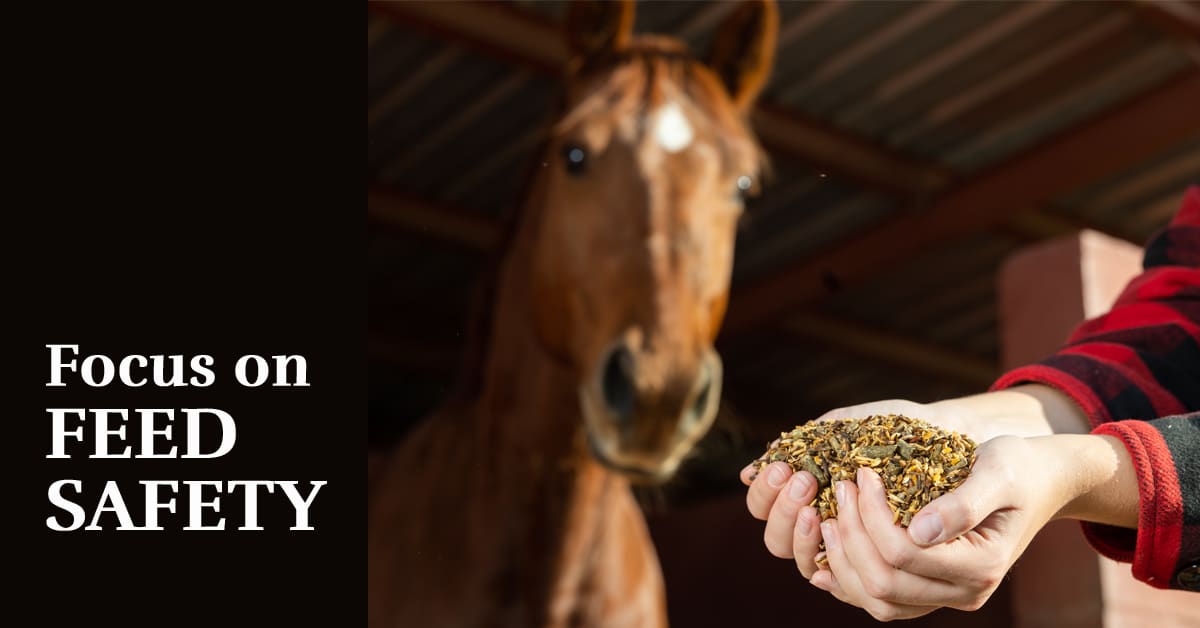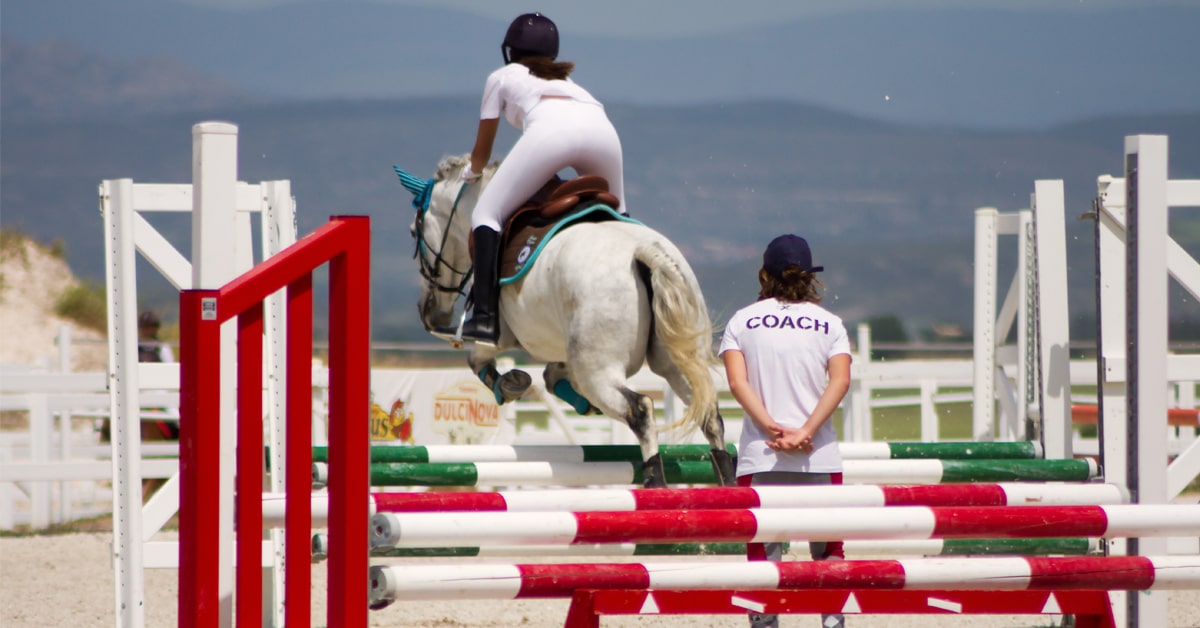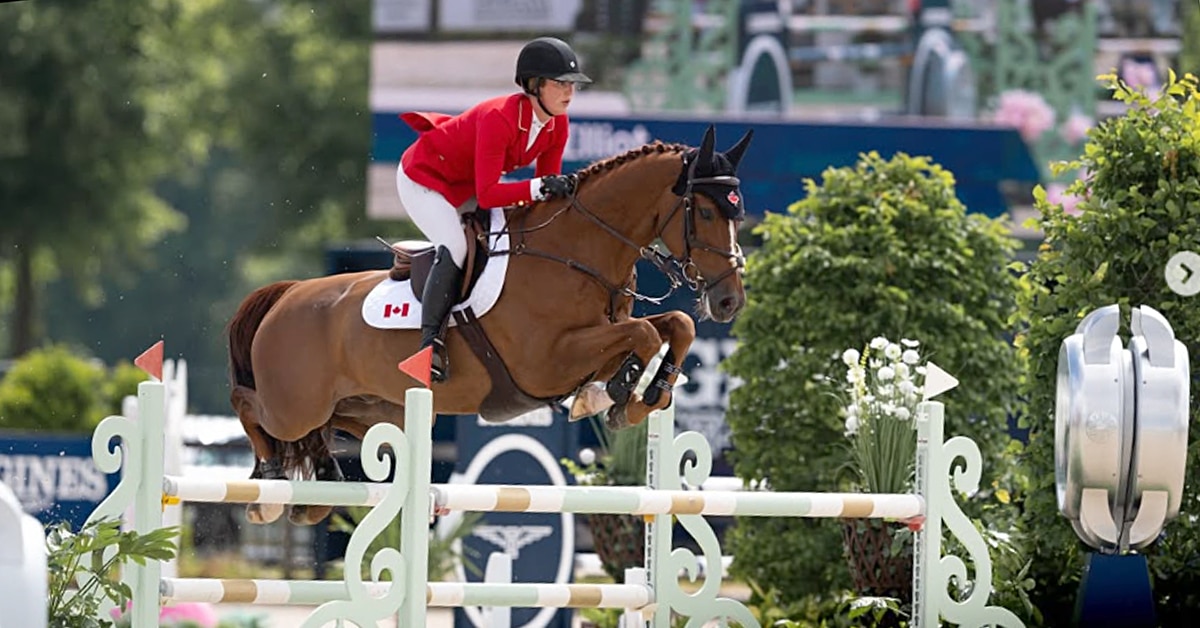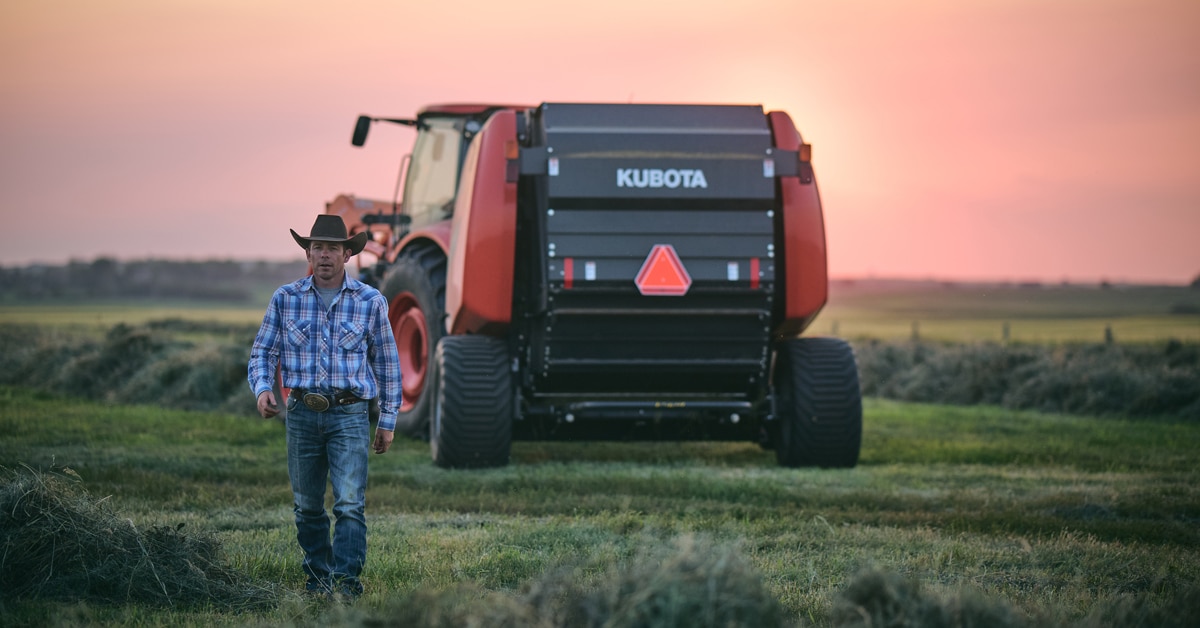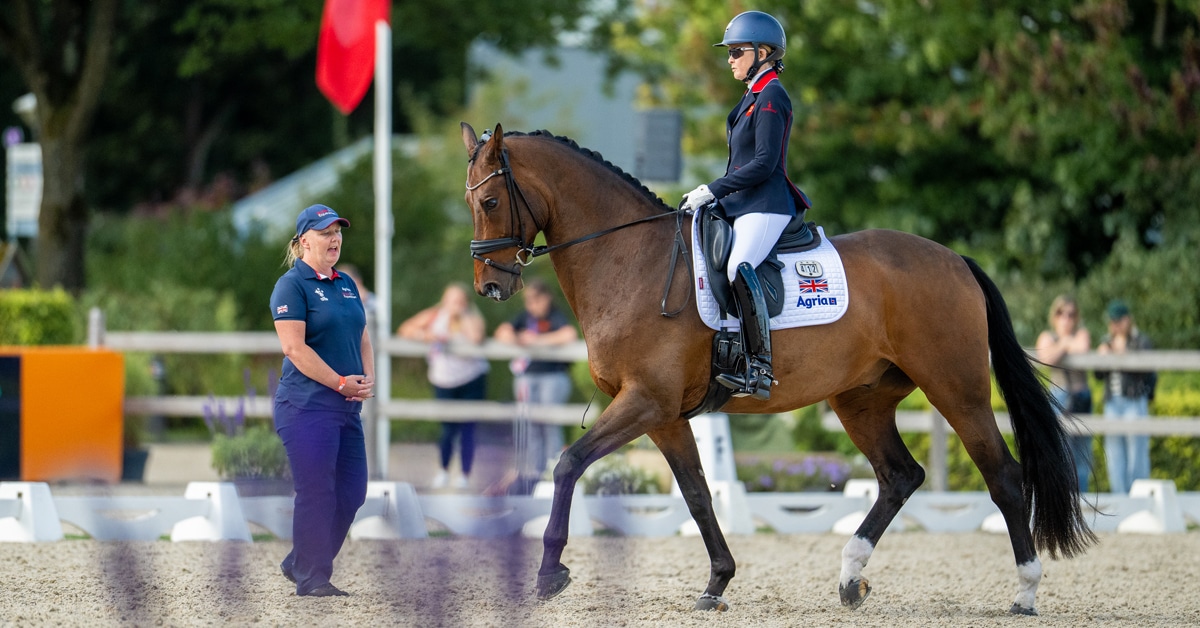These days it is not uncommon to hear, “oh, he used to be a jumper” when asking about the latest superstar in the hunter ring. With increasing frequency, buyers are looking to Europe not only for jumpers, but also hunter prospects that may be currently competing in the jumper rings. European horse dealers appreciate the North American market for attractive, beautifully-moving jumping horses and bring prospects over to the winter circuits for top hunter trainers to try and buy. It is no longer a case of hunters imported from Europe being considered “jumper ring rejects.”
“Most of what we find these days for the hunter ring comes from Europe,” admits Bobbie Reber of Langley, BC. Having judged at the most prestigious shows in North America and trained countless national champions, she has seen the increase in European hunter imports from the jumper ring first-hand. She explains that shopping in Europe often results in better value for the money. “Breeders are doing a great job of producing the horses here in North America, but it’s become difficult and expensive to source them here, because at the same age the horses are just further along in their training in Europe. There are many reasons for this, but for the most part it takes less time and money to develop horses under the European system. In North America, it’s challenging to bring a young horse along because of mileage expenses. In Europe, I can buy a five-year-old for less money than an unbroken four-year-old here.”
Recognizing potential
Her process of scouting the jumper ring consists of attending small shows in Europe and watching horses go in the 1.20m or 1.30m rings. When looking for a potential hunter, a good mind is of the utmost importance. She explains that a lot can be determined simply by watching their attitude when they come to the warm-up ring, as they go into the ring, and how they react as they see the jumps. “I always get excited for one that I see being “jazzed up” before they enter the ring,” she laughs, “because those quiet ones are the ones we want. When looking for hunters in the jumper ring, the one thing that we have to keep in mind is that they have to be a “type.” The horse has to be attractive, of lighter build, and have the movement and jump. I like to see them naturally balanced, have a beautiful canter across the ground, and naturally jump well. Non-negotiable is that the horse jumps well and does an automatic lead change, which is a sign of a balanced horse. They also have to be quiet, because the chances of turning a horse with a lot of blood into a hunter are slim.”
Even if the horse is not a stellar mover under saddle, if it jumps a ten Reber believes average movement can sometimes be overlooked. “If the horse walks in the ring and is a fantastic jumper, the movement can go on the back-burner, because it can potentially win three classes over fences, not do the under-saddle – and still be champion,” she explains. “Most trainers want a beautiful mover, though, because the client can still be assured a ribbon in the under-saddle. A lot of trainers will pay more money to have a good mover, but there are lots of good hunters that are average movers and phenomenal jumpers. But still, it can’t shake the ground like a cart horse as it canters by!”
Reshaping and retraining
The process of retraining a jumper to succeed as a hunter starts long before the first time it enters the ring with a braided mane and tail. Immediately upon arriving home, Reber will fatten the horse up, as hunters are expected to carry slightly more flesh, and put on lighter aluminum shoes. “The horses in Europe are shod with heavier steel shoes,” she explains, “so when I’m looking at a prospect for the hunter ring, a lot of times you have to visualize that the horse will most likely move better with the lighter shoes.”
One benefit to shopping in Europe is that the jumpers tend to be so well-schooled that a lot of the education in “ideability” has already been done. Even so, it’s not just a question of throwing on a standing martingale and a fake tail, says Reber. “It’s not so much that we are re-training them; we’re introducing them to a new way of going,” she explains. “We want a longer frame in their carriage and a longer stride. We want them to become light and relaxed in the bridle, and have their head lower than most jumpers. Natural balance is so important at the canter to be comfortable with a lower head carriage.”
Reber suggests occasionally lungeing in a Pessoa rig or riding in a chambon to encourage development of the topline. “I’ve had horses that were very good jumpers, but weren’t good movers. With a year of occasionally riding in a chambon and lungeing in a Pessoa rig – really working that long topline on the flat – all of a sudden the horse started moving really well and started getting under-saddle prizes. I’ve seen horses become totally different after being a hunter for a year, in their body shape and musculature, movement, and way of going.”
On the flat, Reber will introduce a lot of pole work to encourage the horse to drop his head and relax. The emphasis must become self-carriage in a longer frame. “Jumpers tend to go on contact,” she explains. “It’s amazing how many of these jumpers, because they are kept in such a frame between leg and hand, get lost when you use a soft contact and expect them to carry themselves. I’ve seen eight-year-olds come here jumping the 1.40m classes and when you ask them to jump a 3′ fence on a longer frame with less contact, it’s like you’re riding a rope. All of a sudden they have to canter straight on their own and it’s difficult.” To get this straightness, Reber emphasizes balance in the flat work and lots of canter poles, riding centre-to-centre in a soft frame.
The new hunter must also learn to be comfortable jumping off a “gap.” Jumper riders are trained to go to the base of verticals and will often choose to add a stride to avoid the risk of getting long and flat in the air. “We are looking to train them to leave a gap, but still get the knees up and out in front for a nice bascule.” Reber helps the horses get comfortable finding the gap simply by gradually moving the ground line out from the base of the fence.
“It’s very important when you buy one that it has a natural balance,” Reber adds, “because with some of them, once you encourage more carriage on the front end, they lose their style and end up on the forehand. In Europe, a lot of times the horse will jump high and bring the legs up under them; in the hunters, we want them to use their shoulders a lot more out in front of them. There are ways to improve form over fences, of course, [for example, see “Improving Forelegs Over Fences” June 2012] but when we are turning a jumper into a hunter, we just try to pick one that jumps well to begin with. I want a front end that is good and a horse that wants to jump in a naturally beautiful style. That’s one of the key components.”
She also points out that a lot of horses have to acclimatize to the flowers and decorations they will encounter in the North American rings, as especially at the small European shows they see mostly poles. “A lot will come here and look at the logs, flowers, cut-out boxes, and walls. You’ll get them here thinking that they are experienced show horses – and they spin at a brush box! You want to make sure they get a lot of exposure to natural brush and flowers.”
The Latest


